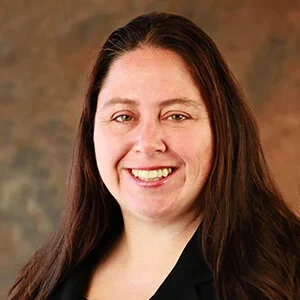Mandatory Automatic Enrollment Under SECURE 2.0
By Rachel Fetters, QPA, QKA
Automatic enrollment features are attractive to employers that wish to increase the plan participation rate and encourage employees to begin saving for their own retirement. Automatic enrollment is designed to improve retirement preparedness and improve overall financial wellness.
Not all plans that have automatic enrollment features are identical. Some plans merely automatically enroll new employees, either once, or multiple times. Others automatically escalate employees’ salary deferrals, usually on an annual basis, generally to a maximum salary deferral rate. Some plans offer permissible withdrawals of salary deferrals of automatically-enrolled employees who choose not to participate. Some plans offer employer contributions that meet certain 401(k) plan nondiscrimination “safe harbors,” an example being the eligible automatic contribution arrangement, or EACA. But not all combinations of automatic enrollment features meet the requirements of the SECURE 2.0 Act of 2022 for new or recently-established 401(k) plans.
What is the mandatory automatic enrollment requirement for 401(k) and 403(b) plans under SECURE 2.0 and when is the deadline?
Because many employees either don’t save for retirement or don’t save enough for retirement, Congress included a provision in the SECURE 2.0 Act of 2022 (SECURE 2.0) requiring new or recently established retirement plans to contain an automatic enrollment feature.
SECURE 2.0 requires most employers that established 401(k) and 403(b) plans on or after December 29, 2022, to include an eligible automatic contribution arrangement (EACA) beginning with the 2025 plan year. For a calendar year plan, the deadline to add this mandatory feature is January 1, 2025.
Why might a current automatic enrollment feature in a 401(k) plan not meet the requirements under SECURE 2.0?
SECURE 2.0 indicates the automatic enrollment feature of a plan must include an EACA with a specific set of provisions. If the automatic enrollment feature currently elected for a plan is not an EACA, or if the plan has an EACA but does not include the requirements specified under SECURE 2.0, an employer may need to amend its plan document to be compliant. Beginning with the 2025 plan year, the mandatory automatic enrollment provisions must include the following.
An EACA feature
Permissible withdrawals
An initial automatic enrollment rate of at least 3 percent, but not more than 10 percent
Automatic increases on the first day of each plan year by 1 percent until reaching at least 10 percent, but not more than 15 percent
Participants who have not selected investment elections must have their assets placed in qualified default investment alternatives (QDIAs) that are designed to preserve principal
Participants must have the right to opt out of deferring into the plan or to affirmatively elect a higher or lower deferral rate than required by the automatic enrollment provisions
Employers with 401(k) or 403(b) plans established on or after December 29, 2022, should review their plan document to ensure they are compliant with SECURE 2.0. Employers that need to amend their plan document should note that an EACA can only be added at the beginning of the plan year and has a required participant notice that is due to participants 30-90 days before the beginning of the plan year. For example, an employer with a calendar year plan that amends to add an EACA provision effective on January 1, 2025, would need to send the EACA notice to participants no later than 30 days before the amendment’s effective date.
Which plans qualify for an exception to the mandatory automatic enrollment requirement?
SECURE 2.0 does provide for some exemptions from the mandatory requirement and IRS Notice 2024-02 provides further clarification. The following employers and plan types are exempt from this requirement.
Plans established before December 29, 2022
Governmental plans, church plans, and SIMPLE 401(k) plans
Small businesses that normally employ 10 or fewer employees
Newly established businesses that have existed for less than three years
Employers that are unsure if they meet the Secure 2.0 exemptions should seek competent legal advice.

